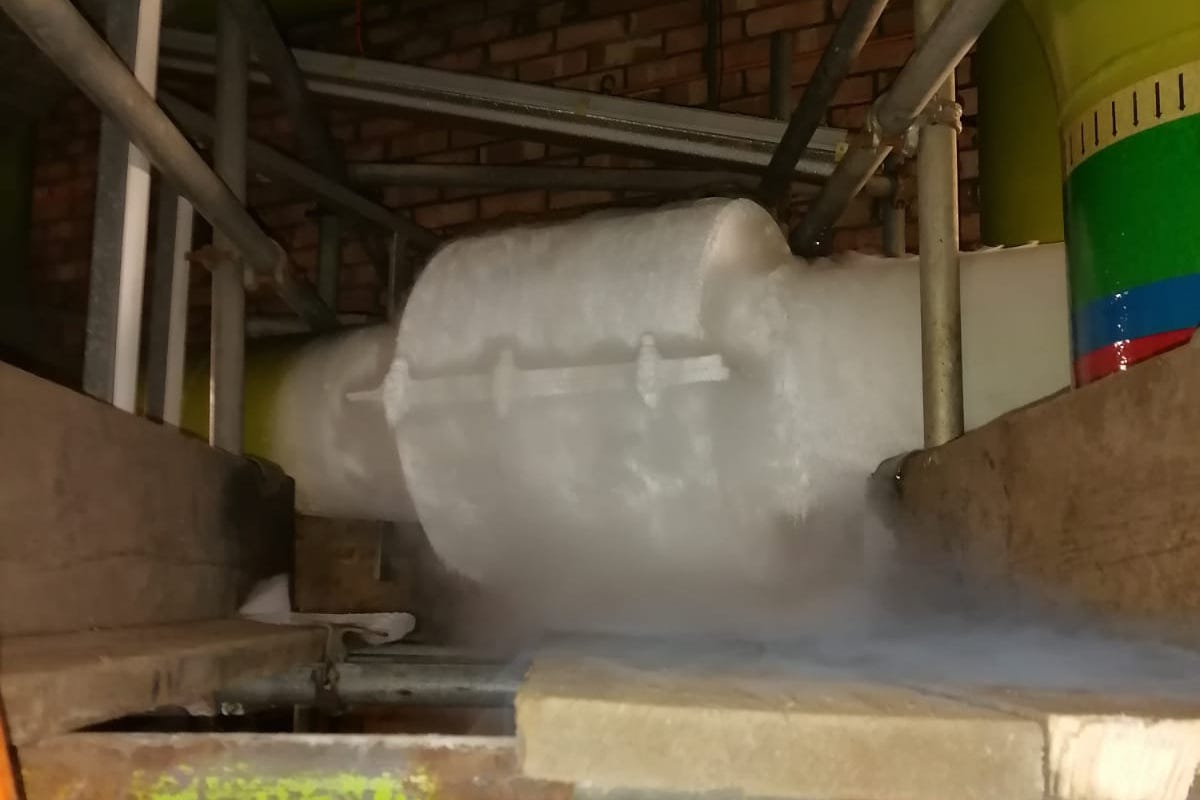
As part of our ongoing upgrade and replacement work at the Capital Building in Liverpool, we utilised an industrial pipe freezing process to replace a number of major valves within the system, that have become faulty over their many years of operation.
When the valves are towards the bottom of the system, the traditional way of completing this work, involves a full drain of all liquid above the level of the valves that need replacement.
When the building in question is 13 stories high with 14″ (350mm) pipes running top to bottom, this is a huge task. In a system of this size, one foot of 350mm (14”) diameter pipe contains 75 litres of water, so the full system contains many, many thousands of litres of treated water. To completely drain this, complete the work and then refill, with the time needed for venting and continuous re-venting, the system downtime required and cost of replacing the treated water is huge.
The alternative is using a pipe freezing process above where the valve replacement is required. You can see the whole process in this short video.
Pipe freezing is an engineering technique of applying liquid nitrogen to the outside of a pipe, which extracts the heat and forms the contents into a solid pressure resistant plug. It prevents the need for draining or shutting down of systems whilst pipework modifications are carried out. In this case, the rest of the system will remain fully operational.
There are both commercial and environmental benefits to pipe freezing over draining the system.
Commercially, it reduces the costs and time in completing mechanical works and the time required for draining the systems. There are also potentially huge savings in the reduction in the time and cost in refilling systems (with water or pipe contents, chemicals or inhibitors) and venting. And finally, the cost and time to re heat or re cool a system after refilling.
On the environmental side, there is a significant reduction in the environmental impact of draining a system and having to dispose of harmful chemicals / inhibitors. As the process only uses Liquid Nitrogen, this boils off into the atmosphere during the application, which means the pipe freezing technique has a low environmental impact. (Nitrogen makes up 78% of the air we breathe). It prevents contamination of public water systems, reduces the energy use for re-heating or re-cooling a system and prevents the vaporisation of glycol when draining and re filling.
A purpose built insulated jacket is fitted around the pipe and sealed. A cryogenic liquid is then injected into the jacket at a controlled rate. The cold liquid extracts the heat from the line contents and a pressure resistant plug of the contents is formed.
Industrial pipe freezing can be effective for pipe sizes ranging from 15mm (½ “) to 900mm (36”) in lines up to 241bar (3500psi).
Here’s the whole job in pictures.
If you would like to discuss any of our services, please call 0151 343 1963 or complete the form below and we will be in touch shortly.